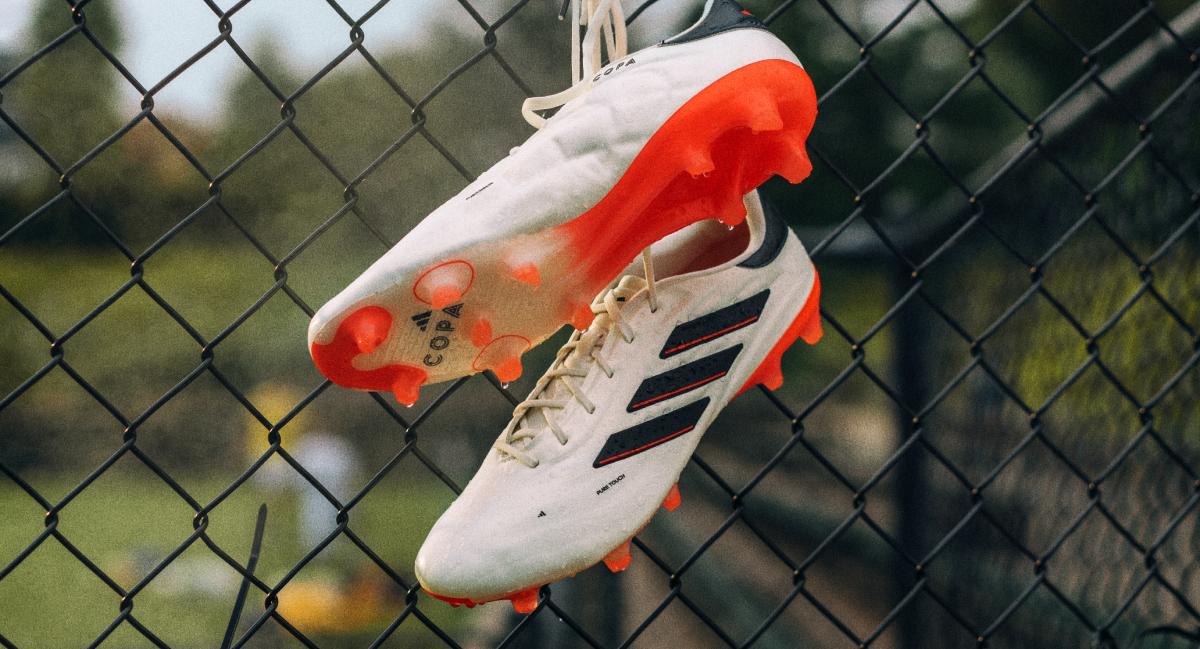Your football boots are designed to withstand the rough and tumble of the game, but the component that feels it the most is the studs (otherwise known as spikes/blades/cleats). To help extend their lifespan, it's a good idea to clean your football boot studs straight after the game concludes. This will prevent dirt and grime from compromising the integrity of the key performance features.
Below we look at how to clean your studs with a step-by-step guide, how long you can expect them to last, and signs it’s time to change them. Let’s go.
How to clean football studs
-
Begin by carefully banging your studs together sole-to-sole to dislodge any dirt, grass, and mud.
-
Remove excess dirt with a soft-bristled toothbrush or damp cloth to remove the last bits of dirt and grime.
-
Then mix warm water (not hot) with a dash of mild soap or detergent (steer clear from abrasive cleaners) and wipe them down with a soft cloth or toothbrush until they’re clean.
-
If you’re changing or cleaning the studs, adding a small amount of lubricant to the stud thread can help prevent rust from occurring or any moisture from getting in.
-
Never store your shoes or studs wet. Allow them to air-dry indoors at room temperature, keeping away from direct sunlight, and avoid using a hair dryer as extreme heat will damage the materials and can cause the soleplate to warp.
If you already clean your football boots, you're one step ahead to keeping them in top shape, but if we want to get down to the pointy end, then focusing on the studs is going to give them one better.

The sign it's time to replace your studs
Not all football boots have screw-in and detachable studs, but for those that do, here's what to look out for:
Visible Damage
One of the most obvious signs it's time to replace your football studs is visible wear (such as cracks, tears, or significant scuffing) on the tread. If the studs are significantly worn down, it can compromise traction and stability on the field.
Check for any signs of separation between the sole and the upper part of the stud. If you notice the sole detaching or any visible cracks, it's a clear indicator that the structural integrity of the stud is compromised.
Insole Discomfort
If the insoles have lost their cushioning or support, leading to discomfort during play, it may be a sign that your football studs are no longer providing the necessary protection and shock absorption.
Loose or Broken Studs
Check the studs for looseness or breakage. If any studs are wobbly or missing, it can impact your ability to make quick cuts, turns, and maintain stability – even cause injury.
Bad Smell
It's not just your footy boots that can come with an after-wear smell, your studs can too. A persistent bad odour, mould, or mildew inside the studs, even after cleaning, may suggest that the materials are breaking down and not adequately ventilating.
Performance Issues
If you notice a decline in your performance, such as slipping more frequently or lacking the responsiveness you once had, it might be time to consider new studs that better suit your playing style.
Outdated Tech
Football boot technology is ever-evolving, so if your studs lack modern features or innovations that can enhance performance and comfort, it might be worth considering an upgrade to a newer model.
How long do football studs last?
The lifespan of screw-in and detachable football studs can vary depending on factors such as frequency of use, playing conditions, and the intensity of the game. On average, football studs could last anywhere from 20 to 70 hours of playtime (say, anywhere from 6 months to a couple of years).
However, you might find that if you're only wearing your boots for field playing and not on concrete, the other parts of the boots may break down first. Regular maintenance, proper cleaning, and rotation with other pairs of boots can help extend their lifespan.
Your game is only as strong as your foundation, so make sure your trusty studs are given the love they deserve.
If you need help choosing your next pair of footy boots, check out our guide here.